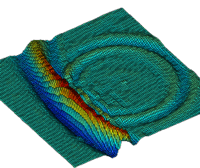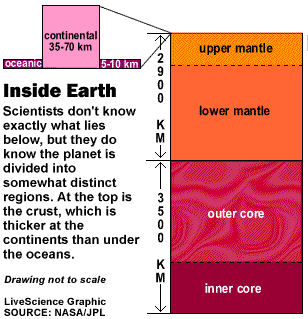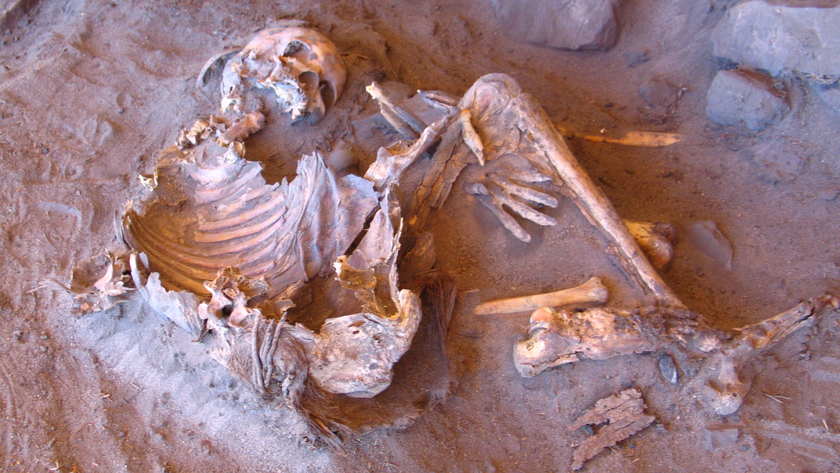Earth as a Giant Pinball Machine

A lot of our curiosity is drawn toward the heavens, but the world below our feet is full of deep mysteries as well. Scientists don't know exactly what's down there or how it all works.
The underground is studied through seismic waves - basically sound waves that travel in the Earth. It's like sonar, but in rock instead of water.
"Geophysics is based on looking at echoes that bounce back from layers underneath the surface," said Kasper van Wijk of the Colorado School of Mines. "This has been the basic idea of seismology for the last 100 years."
Seismologists examine the waves to determine the composition of Earth's interior.
But van Wijk and his colleague Anatoli Levshin of the University of Colorado, Boulder, have called the simple model into question. They ran experiments in which obstacles in the Earth's interior could cause seismic waves to bounce around several times before returning to the surface. The obstacles are not like boulders on a path; they can just be differences in density or composition. Scientists call them inhomogeneities.
"Imagine a pinball machine," van Wijk said in a telephone interview. "You send down a pinball and it bounces many times on its way back to you. If you didn't have any obstacles, it would travel faster."
Hidden obstacles
Sign up for the Live Science daily newsletter now
Get the world’s most fascinating discoveries delivered straight to your inbox.
The general rule of thumb is that the denser a material, the faster the seismic waves travel. And geologists know that longer wavelengths penetrate deeper than shorter wavelengths (it's the same reason you hear the loud bass beat from a passing car but not the high frequencies.)
An acoustic wave traveling left to right in a slab of aluminum. Part of the wave has bounced off of a small hole in the metal, forming the ring. Credit: Physical Acoustics Laboratory, Department of Geophysics, Colorado School of Mines
The general picture is that certain waves reflect off of boundary layers, say, between granite and sandstone. By measuring the time it takes for these waves to return to the surface, a geologic map of the interior can be drawn.
The fly in the ointment, according to van Wijk and Levshin, is that obstacles like cracks or caves or underwater streams will cause multiple reflections of seismic waves, giving the impression that the waves have slowed down.
The researchers simulated this effect in a single slab of aluminum, in which they etched small notches. Measurements of acoustic waves through the metal looked as if there were layers in the slab.
"If you ignore the 'pinball' mechanism, your interpretation of layering could be wrong," van Wijk said. A combination of layering and obstacles probably affects all seismic data, he thinks.
Bridging the gap
These results, which were published last month in the journal Geophysical Research Letters, are relevant for geologic surveys that look for mineral deposits and oil reserves or that assess the possible risks of building a bridge or tunnel in a certain area. Van Wijk said these surveys can be improved by incorporating multiple bounces into the models.
In a typical survey, geologists generate seismic waves, typically tens to hundreds of yards (meters) long, by igniting sticks of dynamite underground or vibrating the surface with a large, bouncing truck on hydraulic suspension.
Natural sources, like earthquakes and volcanic eruptions, generate seismic waves more like a kilometer (0.6 mile) in length. These waves are able to penetrate past the Earth's crust into the mantle and core of the planet.
Van Wijk said that these so-called "body" waves likely also bounce multiple times between hot and cold spots in the molten rock or on the possibly rough surface between the mantle and the core.
"People have ignored this so far," van Wijk said, "but we think that it will become more important."
What's down there

- The Earth's radius is about 4,000 miles (6,400 kilometers). The main layers of its interior are in descending order: crust, mantle and core.
- The crust thickness averages about 18 miles (30 kilometers) under the continents, but is only about 3 miles (5 kilometers) under the oceans. It is light and brittle and can break. It is where most earthquakes originate.
- The mantle is more flexible - it flows instead of fractures. It extends down to about 1,800 miles (2,900 kilometers) below the surface.
- The core consists of a solid inner core and a fluid outer core. The fluid contains iron, which, as it moves, generates the Earth's magnetic field.
- The crust and upper mantle form the lithosphere, which is broken up into several plates that float on top of the hot molten mantle below.











